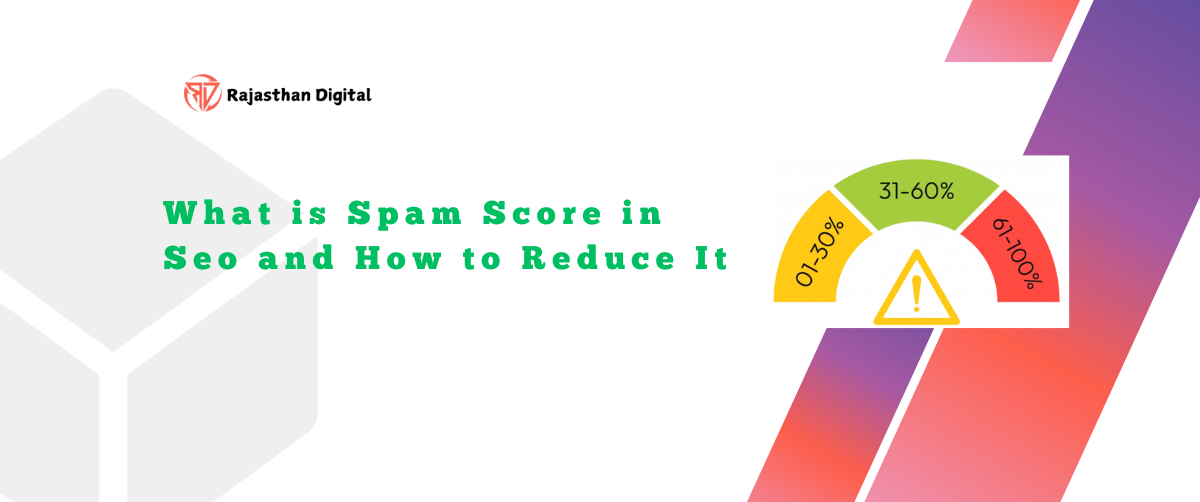What is Spam Score in SEO and How to Reduce It
What is Spam Score in SEO?
Spam score is a metric developed by MOZ that assesses the likelihood of a website being penalized by search engines or considered spammy. Developed by various SEO tools, this score ranges from 0% to 100%, with higher percentages indicating a greater risk of penalties. It is calculated based on 27 different factors, such as low-quality backlinks, thin content, and over-optimization practices.
How do I check my spam score?
Assessing your website’s spam score is essential for identifying potential issues that could harm its ranking. Several SEO tools offer spam score analysis:
- Moz Spam Score Checker: Moz provides a spam score metric that evaluates various factors to determine the spam likelihood of a website.
- Ahrefs: While not explicitly labeled as a spam score, Ahrefs offers a “Domain Rating” that can help infer the quality and trustworthiness of a site.
- SEMrush: This tool provides a “Toxic Score” for backlinks, helping identify potentially harmful links affecting your site’s reputation.
By utilizing these tools, you can gain insights into your website’s spam score and identify areas needing improvement.
Spam Score Signals
MOZ’s Spam Score Signals are based on 27 factors that indicate spam-like behavior or practices on a website. These signals are divided into categories and used to calculate the Spam Score. Below are 27 Spam Score signals:
- Low Page Count: Domains with very few pages are often linked to spam.
- Spammy TLDs: Domains with TLDs like .download, .stream, .biz, etc., are often spammy.
- Long Domain Name: Excessively long domain names correlate with spam.
- Numbers in Domain Name: Numeric characters in domains are commonly found in spam sites.
- No Google Fonts: Spam sites rarely use Google Fonts or other specialized font APIs.
- No Google Tag Manager: Legitimate sites often use Google Tag Manager, which spam sites rarely adopt.
- No DoubleClick Tags: Spam sites almost never include DoubleClick ad tags.
- No Phone Number: Spam sites rarely display valid phone numbers.
- No LinkedIn Links: Spam sites lack links to legitimate LinkedIn profiles.
- No Email Address: Email addresses are almost always missing on spam sites.
- No HTTPS: Spam sites typically don’t invest in SSL certificates, making HTTPS rare.
- Use of Meta Keywords: Sites using meta keyword tags are more likely to be spam.
- Low Visit Rank: Websites with very low visitor numbers are often spammy.
- Non-Local Rel Canonical: Improper use of canonical tags correlates with spam.
- Odd Title Lengths: Very short or long titles are linked to spam.
- Odd Meta Description Lengths: Extremely short or long meta descriptions are spam signals.
- Long Meta Keywords: Spam sites often use lengthy meta keyword tags.
- No Favicon: Spam sites rarely use favicons, unlike legitimate ones.
- No Facebook Pixel: Spam sites almost never include Facebook tracking pixels.
- Abnormal External Links: Spam sites have very high or low numbers of external links.
- Odd Linking Domains: Spam sites link to unusually high or low numbers of unique domains.
- High Link-to-Content Ratio: Excessive external links compared to content is a spam signal.
- Sequential Vowels/Consonants: Spammy domain names often include unusual sequences of vowels or consonants.
- Hyphens in Domain Name: Multiple hyphens in domain names are common in spam sites.
- Abnormal URL Lengths: Spam pages often have extremely short or long URLs.
- “Poison Words”: Keywords linked to spammy topics (pharma, adult content, gaming) in content indicate spam.
- High CPC Anchor Text: Outlinks with high-cost keywords (e.g., pharma, gambling) are a spam signal.
You can reduce your website’s spam score by identifying 27 factors identified by MOZ to reduce your spam score.
How much spam score is okay?

According to Moz, website spam scores range from 0% to 100%:
- 0% – 30% (low): This is a good score, which will make your website less likely to be marked as spam.
- 31% – 60% (medium): This is an average score; may need improvement.
- 61% – 100% (high): This is a high score, which will make your website more likely to be marked as spam.
So, a spam score less than 30% is considered ideal.
In conclusion, understanding and managing your website’s Spam Score is crucial for maintaining a healthy SEO profile. By identifying and addressing the 27 factors that contribute to a high Spam Score, you can reduce the risk of penalties and improve your website’s credibility. Regularly monitoring your site using tools like MOZ, Ahrefs, and SEMrush can help you stay on top of potential issues and ensure your site adheres to best SEO practices, ultimately enhancing its performance in search engine rankings.

